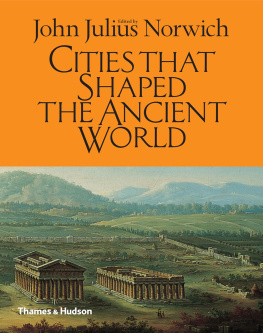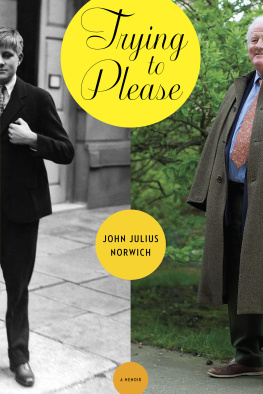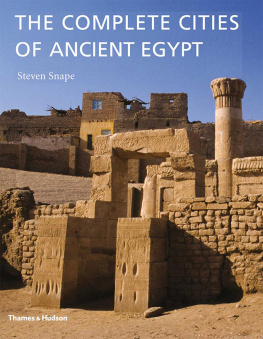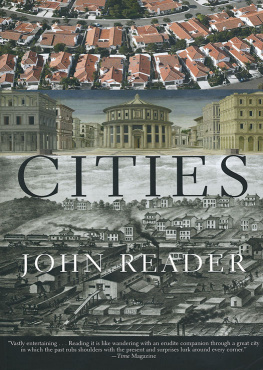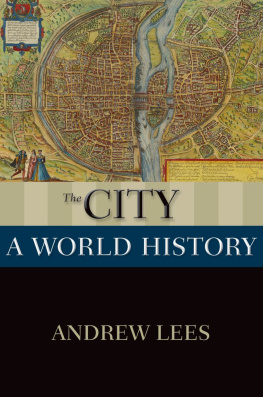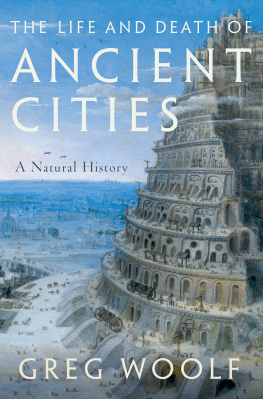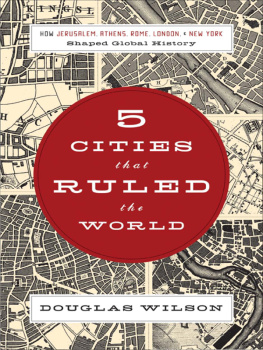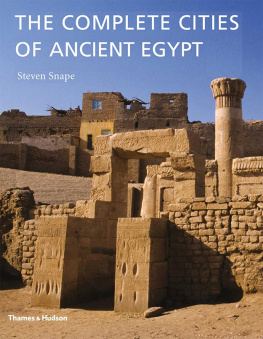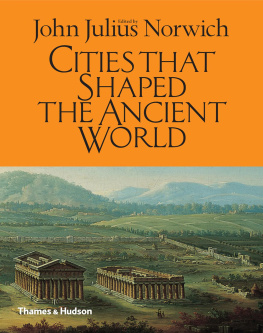About the Editor
John Julius Norwich is the author of magisterial histories of Norman Sicily, Venice, Byzantium and the Mediterranean, and has also written on Mount Athos, the Sahara, English architecture, Shakespeares histories and the history of the Papacy. His memoirs, Trying to Please, were published in 2008. Since 1970 he has compiled an annual pamphlet anthology, A Christmas Cracker. He has made some thirty historical documentaries for television. Formerly Chairman of Colnaghi, the oldest fine art dealers in London, he is Honorary Chairman of the Venice in Peril Fund and Chairman Emeritus of World Monuments Fund Britain.
MARGARETE VAN ESS
Climb Uruks wall and walk back and forth! Survey its foundations, examine its brickwork! Did the Seven Sages not lay its foundations? A square mile is the city, a square mile date-grove half a square mile the temple of Ishtar: three square miles and a half is Uruks expanse.
EPIC OF GILGAMESH
At the beginning of the 3rd millennium BC, Uruk was a thriving city of some 30,000 to 50,000 inhabitants, standing on the river Euphrates on the northern shore of the delta with the Tigris, some 300 km (186 miles) south of modern Baghdad. Enclosing an area of 5.3 sq. km (2 sq. miles) within its great city wall, it was the largest metropolis of its day and maintained political and commercial relations with other nations and cities both near and far. Its brilliantly organized urban administration and its achievements in monumental architecture were well known, and were commemorated in several epics, notably that of Gilgamesh, one of the earliest of all literary works.
Although King Gilgamesh of Uruk may have been a historical ruler of the 27th26th centuries BC, the heroic deeds narrated in that epic reflect events from earlier periods as well, and suggest that by his day the kingdom had attained a remarkably high degree of sophistication. Uruk could already look back on around fifteen hundred years of history, during which it had successfully adapted to the harsh living conditions of southern Mesopotamia. While older permanent human settlements existed elsewhere in the region, the flat, alluvial and often marshy land between the Euphrates and the Tigris had been inhabited only since the 6th millennium BC: the climate was too hot and the river waters, which flooded the flat lands, too difficult to tame.

The sanctuary of Ishtar, goddess of love and war, existed at Uruk for around 3,000 years. The preserved remains visible today belong mainly to the impressive temple built by king Urnamma around 2100 BC.
Nik Wheeler/Corbis.
Secure life in this difficult region depended on a highly developed system of control. Such a system demands agreements first with neighbouring and then with more distant settlements; and as more villages and fields become involved, these agreements call for specialized negotiators. Archaeological evidence shows that by 3500 BC Uruk had become a large urban centre, with an efficient administration, organized religion and impressive public architecture all hallmarks of a true city. There were farmers to ensure the food supply, artisans organized in the mass production of clothes, pottery and tools, as well as artists to create beautiful works of art for the citys adornment.
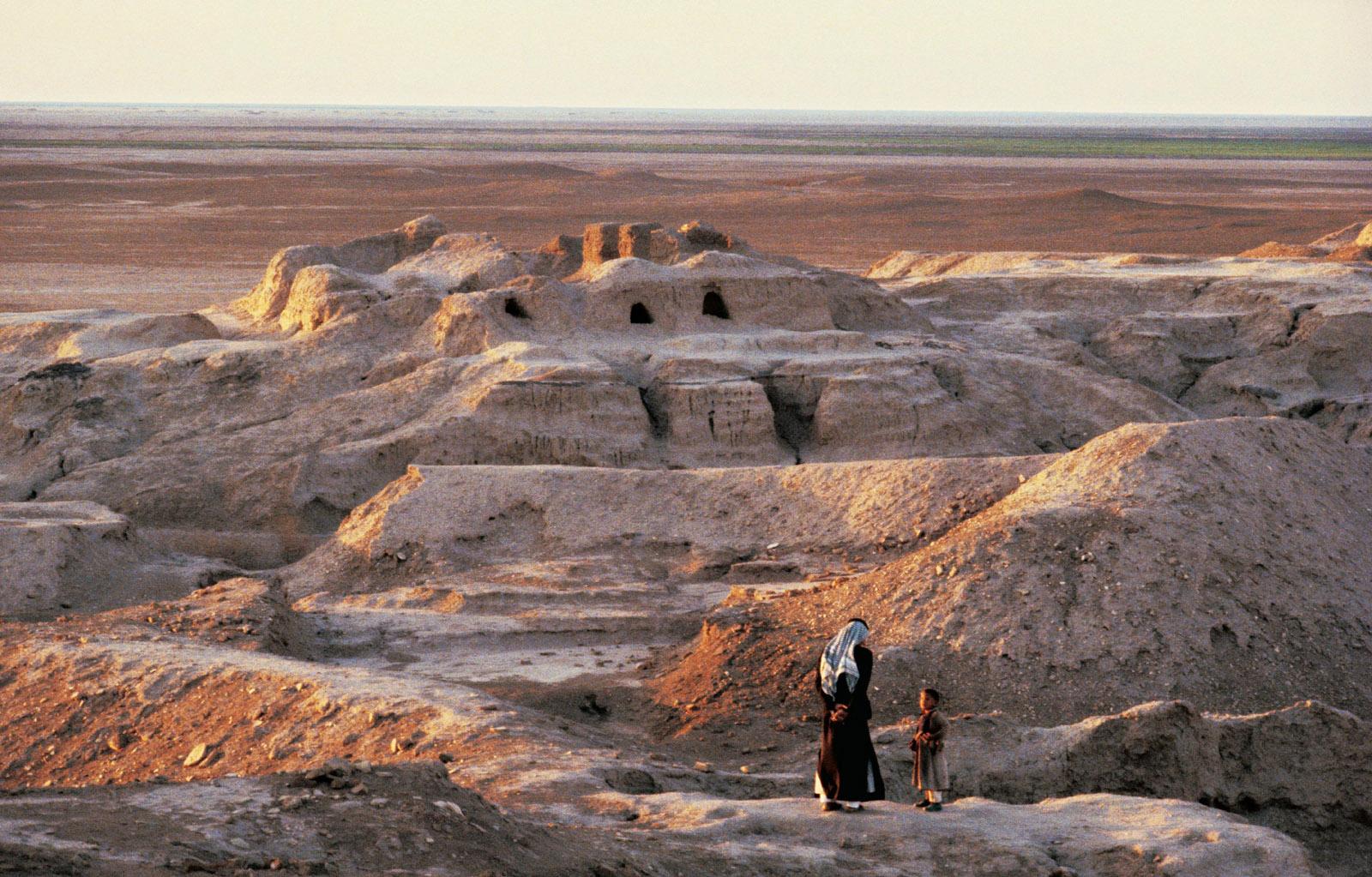
Uruk developed from two smaller settlements, one on each bank of the river Euphrates, and had two major sanctuaries. Although the temple for Ishtar later became the main religious centre, the sanctuary of Anu, god of heaven, always received worship as well. Its high terrace, with the remains of a temple on top, was rebuilt at least 18 times during the 4th millennium BC.
Nik Wheeler/Corbis.
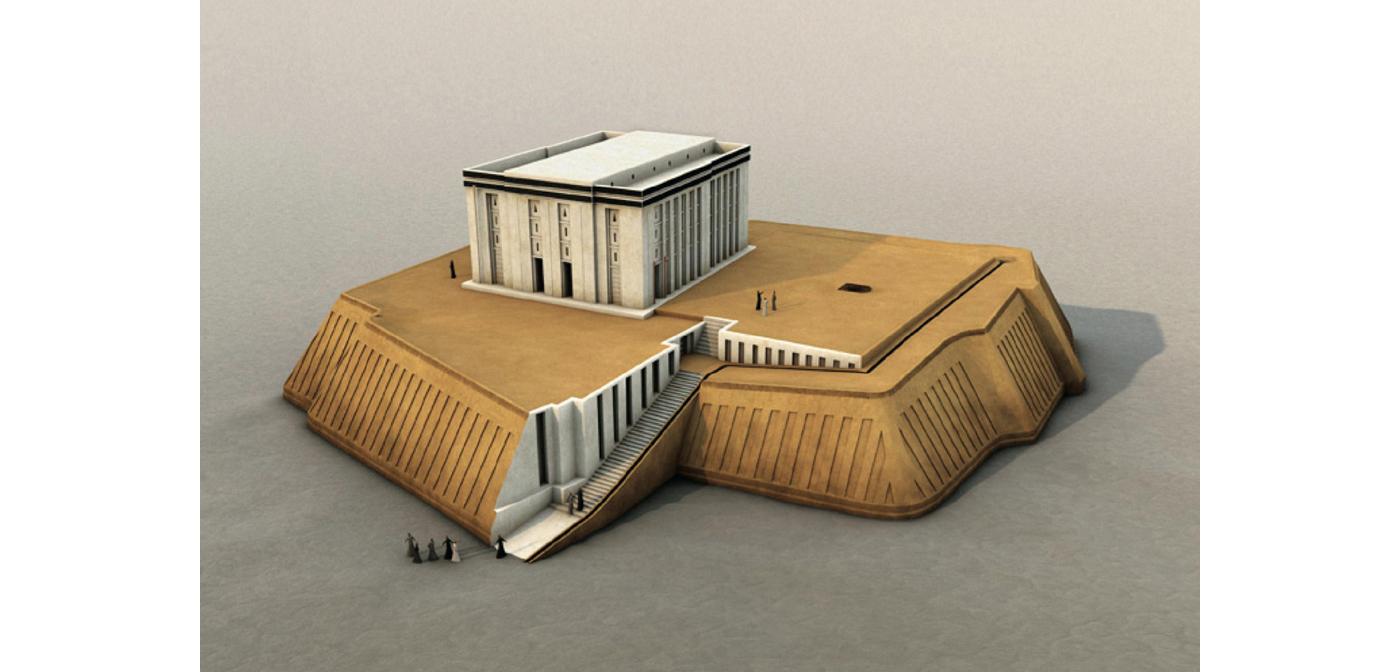
Reconstruction model of the sanctuary of Anu the White Temple on top of the high terrace, which was built around 3500 BC.
artefacts-berlin.de; material: German Archaeological Institute.
Southern Mesopotamia has few natural resources, and consequently a considerable import trade developed in wood and metals from the Taurus, Zagros and Lebanon ranges, as well as semiprecious stones and lapis lazuli from as far away as Afghanistan. As the social hierarchy became more complex, the number of professions grew: to the administrators and soldiers were added priests, scientists and astronomers who made observations of the natural world. Then, around 3200 BC, came the earliest form of writing, created initially for the purposes of administration.
In Uruks early days its public buildings, raised up on artificial hills, impressed by their sheer size as well as by the splendour of their decoration. Visible from far away, they left onlookers in no doubt of the citys wealth and power. But then, around 3000 BC, the entire centre was remodelled on a completely new design. At its heart, on a terrace, stood a single temple, dedicated to Ishtar, goddess of love and war; surrounding this were other, humbler buildings with spacious courtyards that were given over to the temple administration.
As the city prospered, its area steadily increased; and finally, probably in the time of Gilgamesh, it was enclosed by its celebrated wall, 8.7 km (5 miles) long, reinforced by 900 buttresses. Construction of the wall meant that the rivers providing the city with water had to be canalized, and the resulting network of large and small channels facilitated the movement of traffic around and within the city. The sheer scale and sophistication of these monumental works ensured Uruks renown for the next 2,500 years.
The urban core continued to be inhabited until the 4th century AD, and as both a city and a religious centre, Uruk retained a certain importance, but it never recovered its former political power. Its ruins now lie isolated in the deserts of Iraq.
MARC VAN DE MIEROOP
Ur was indeed given kingship, but it was not given an eternal reign. From time immemorial since the land was founded, until the people multiplied, who has ever seen a reign of kingship that would take precedence forever?
LAMENT OVER THE DESTRUCTION OF SUMER AND UR, c. 1800 BC
When sometime in the 1st millennium BC the anonymous author of the biblical book of Genesis narrated the life of Abraham, the patriarchs birthplace was identified as Ur of the Chaldaeans. To those who read or heard the story it was probably a city they had never seen, but the name must have triggered something in their imagination, almost certainly as a very ancient place. The site we now know to hold the ruins of Ur Tell al-Muqayyar in the very south of modern Iraq was abandoned around 400 BC at the end of a long history of probably more than 4,000 years. In that time it had known moments of greatness but also of decline and destruction in the Lament over the Destruction of Sumer and Ur the god Enlil points out that no glory lasts forever. Because archaeologists in the 1920s and 1930s in particular excavated the site extensively, historians can reconstruct the citys condition at various times. Among its peaks of prosperity were the 26th century BC, when its elites were buried in tombs with magnificent grave goods, the 21st century BC, when Ur was the capital of a state that firmly held together the entirety of Babylonia and the territories to its east, and the 19th to 17th centuries BC, when the city was an economic powerhouse with a citizenry of dynamic entrepreneurs. But there were also times of crisis, as after 1740 BC, when Ur was ransacked by Babylonian troops in revenge for its rebellion, or in the early 1st millennium BC, when the city and its surroundings were barely inhabited.
Next page
